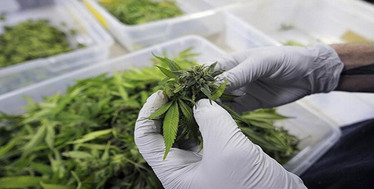Quantification of Cannabinoids in Industrial Hemp Using the Agilent 1220 Infinity II LC System
Agilent offers a proven workflow for the quantification of targeted cannabinoids commonly found in hemp.

contributed by Agilent Technologies |
• Quantify Δ9-tetrahydocannabinol (THC) in hemp plant to ensure compliance with federal law
• Quantify tetrahydrocannabinolic acid (THCA) to provide a total THC content (0.877 × [THCA] + [THC]) where required
• Quantify a total of 11 phytocannabinoids in hemp
• Rapid method implementation
• Consulting services to assist and train your staff

Introduction
The U.S. Agriculture Improvement Act, also known as the Farm Bill, was signed into law in December 2018. A major provision in the law legalizes hemp as an industrial commodity. The DEA, USDA, and FDA have published a combined Statement of Principles in the Federal Register (FR 53365). This statement defines industrial hemp as any part or derivative (including seeds) of the plant Cannabis sativa L. with a dry weight concentration of tetrahydrocannabinols not greater than 0.3 % (wt/wt).
In the U.S., where recreational or medicinal marijuana programs have been legalized, regulations have been defined to ensure the safety and quality of the products sold to consumers. These regulations include analytical chemistry and biological assays to identify and quantify pesticides, mycotoxins, heavy metals, residual manufacturing solvents, terpenes, and microbial contaminates. In all regions with some form of cannabis legalization, potency testing is also required. At a minimum, potency testing profiles and quantifies THC, THCA, cannabidiol (CBD), cannabidiolic acid (CBDA), and in some states, cannabinol (CBN) or cannabigerol (CBG), but most testing laboratories profile and quantify these and other phytocannabinoids.
Log in or register to read this article in full and gain access to The Cannabis Scientist’s entire content archive. It’s FREE!












